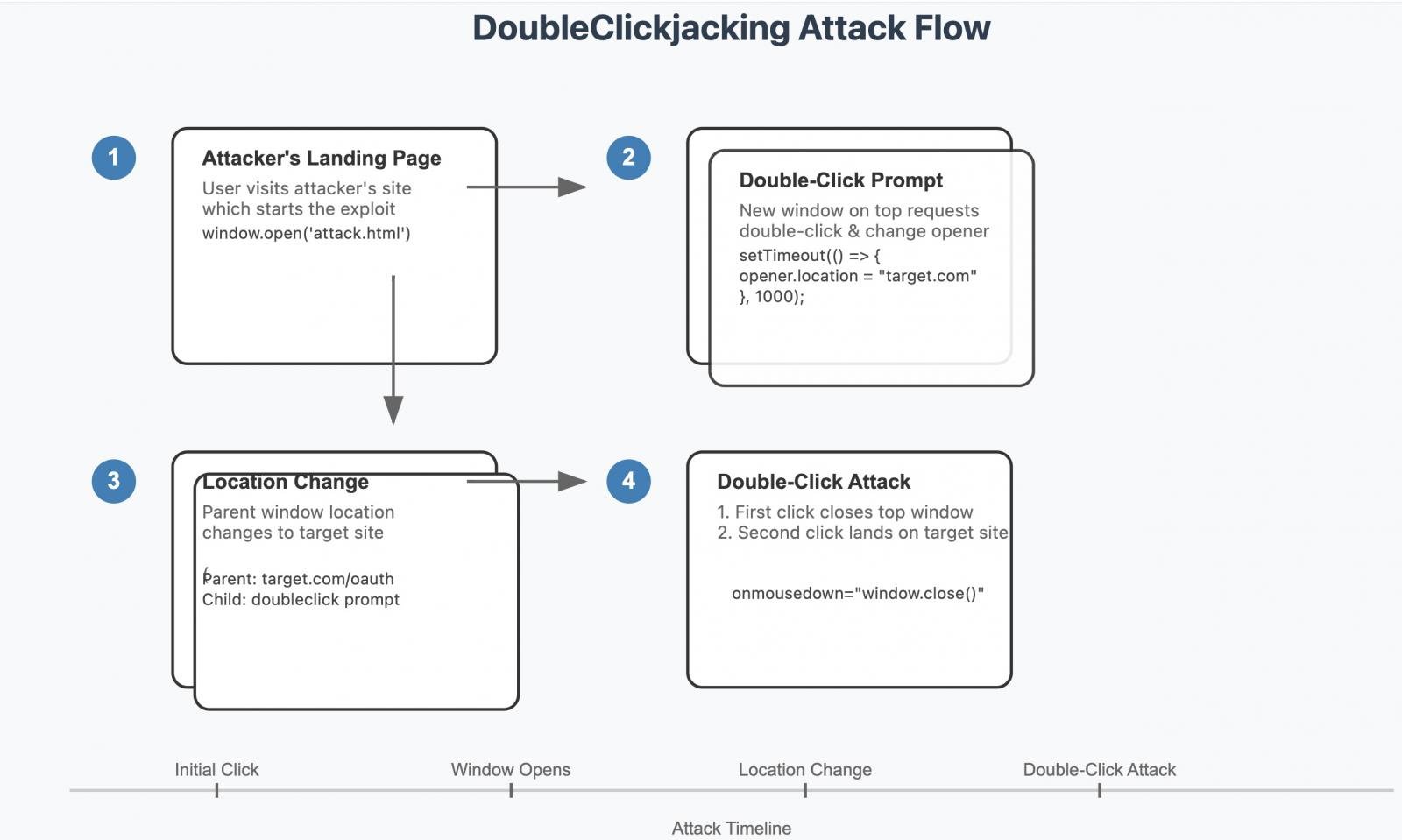A brand new variation of clickjacking assaults referred to as “DoubleClickjacking” lets attackers trick customers into authorizing delicate actions utilizing double-clicks whereas bypassing current protections in opposition to most of these assaults.
Clickjacking, also referred to as UI redressing, is when menace actors create malicious internet pages that trick guests into clicking on hidden or disguised webpage parts.
The assaults work by overlaying a professional webpage in a hidden iframe over an online web page created by the attackers. This attacker-created webpage is designed to align its buttons and hyperlinks with hyperlinks and buttons on the hidden iframe.
The attackers then use their internet web page to entice a person to click on on a hyperlink or button, corresponding to to win a reward or view a cute image.
Nonetheless, once they click on on the web page, they’re really clicking on hyperlinks and buttons on the hidden iframe (the professional website), which may probably carry out malicious actions, corresponding to authorizing an OAuth utility to connect with their account or accepting an MFA request.
Through the years, internet browser builders launched new options that forestall most of those assaults, corresponding to not permitting cookies to be despatched cross-site or introducing safety restrictions (X-Body-Choices or frame-ancestors) on whether or not websites will be iframed.
New DoubleClickjacking assault
Cybersecurity knowledgeable Paulos Yibelo has launched a brand new internet assault referred to as DoubleClickjacking that exploits the timing of mouse double-clicks to trick customers into performing delicate actions on web sites.
On this assault state of affairs, a menace actor will create an internet site that shows a seemingly innocuous button with a lure, like “click on right here” to view your reward or watch a film.
When the customer clicks the button, a brand new window shall be created that covers the unique web page and contains one other lure, like having to resolve a captcha to proceed. Within the background, JavaScript on the unique web page will change that web page to a professional website that the attackers wish to trick a person into performing an motion.
The captcha on the brand new, overlaid window prompts the customer to double-click one thing on the web page to resolve the captcha. Nonetheless, this web page listens for the mousedown occasion, and when detected, rapidly closes the captcha overlay, inflicting the second click on to land on the now-displayed authorization button or hyperlink on the beforehand hidden professional web page.
This causes the person to mistakenly click on on the uncovered button, probably authorizing a plugin to be put in, an OAuth utility to connect with their account, or a multi-factor authentication immediate to be acknowledged.

Supply: Yibelo
What makes this so harmful is that it bypasses all present clickjacking defenses as it isn’t utilizing an iframe, it isn’t making an attempt to move cookies to a different area. As an alternative, the actions happen immediately on professional websites that aren’t protected.
Yibelo says that this assault impacts nearly each website, sharing demonstration movies using DoubleClickjacking to take over Shopify, Slack, and Salesforce accounts.
The researcher additionally warns that the assault isn’t restricted to internet pages as it may be used for browser extensions as nicely.
“For instance, I’ve made proof of ideas to prime browser crypto wallets that makes use of this system to authorize web3 transactions & dApps or disabling VPN to show IP and many others,” explains Yibelo.
“This will also be achieved in cell phones by asking goal to ‘DoubleTap’.”
To guard in opposition to such a assault, Yibello shared JavaScript, which could possibly be added to webpages to disable delicate buttons till a gesture is made. This may forestall the double-click from robotically clicking on the authorization button when eradicating the attacker’s overlay.
The researcher additionally suggests a possible HTTP header that limits or blocks speedy context-switching between home windows throughout a double-click sequence.

